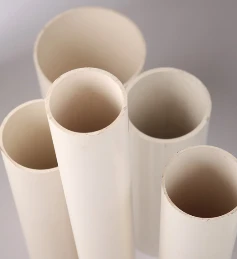Nov . 19, 2024 11:04 Back to list
HDPE Sheet Thickness Options and Guidelines for Various Applications
Understanding HDPE Sheet Thickness A Comprehensive Guide
High-Density Polyethylene (HDPE) sheets are versatile materials that find applications in various industries, such as construction, packaging, agriculture, and manufacturing. The thickness of HDPE sheets plays a critical role in determining their strength, durability, and suitability for specific applications. In this article, we'll explore the concept of HDPE sheet thickness, its implications, and how to select the right thickness for your project.
What is HDPE?
High-Density Polyethylene (HDPE) is a thermoplastic polymer made from petroleum. It is known for its high strength-to-density ratio, making it an ideal choice for many applications. HDPE is resistant to impact, chemicals, and UV rays, which contributes to its popularity in both indoor and outdoor settings. It is also recyclable, further enhancing its appeal in sustainable practices.
Importance of Thickness
The thickness of an HDPE sheet can significantly influence its performance capabilities. Generally, HDPE sheets are available in various thicknesses, ranging from a mere few millimeters to several centimeters. The choice of thickness will depend on several factors, including the intended use, environmental conditions, and required durability.
1. Strength and Durability Thicker sheets tend to be stronger and more resistant to wear and tear. For applications that involve heavy loads or constant exposure to abrasive materials, thicker sheets are often recommended. Conversely, for lighter applications, such as craft projects or packaging, thinner sheets might suffice.
2. Flexibility and Weight Thinner sheets are more flexible and lighter, making them easier to handle and install. This can be beneficial in situations where ease of manipulation is crucial. However, increased flexibility may come at the cost of reduced strength and durability.
3. Cost Considerations Generally, thicker HDPE sheets are more expensive than their thinner counterparts. When selecting the appropriate thickness, it's essential to balance performance requirements with budget constraints. For projects where cost is a primary concern, opting for the thinnest viable option can help manage expenses without sacrificing quality.
Common Thicknesses and Their Applications
Here are some common HDPE sheet thicknesses along with their typical applications
hdpe sheet thickness

- 1/16 inch (1.6 mm) Suitable for light applications, such as protective coverings or temporary barriers. Often used in craft projects, signage, or displays. - 1/8 inch (3.2 mm) A popular choice for applications like food packaging, indoor furniture, and decorative elements. Provides a balance between flexibility and strength.
- 1/4 inch (6.4 mm) Ideal for durable applications, such as marine environments, industrial settings, or heavy-duty equipment guards. This thickness offers significant impact resistance and durability.
- 1/2 inch (12.7 mm) and above Typically used in heavy-duty applications, such as bulk containers, industrial flooring, or structural components in construction. This thickness can withstand significant physical stress and adverse environmental conditions.
Selecting the Right Thickness
Choosing the right thickness for your HDPE sheets requires careful consideration of several factors
1. Application Requirements Analyze the specific demands of your project. Will the sheet be subjected to heavy loads, sharp objects, or extreme temperatures? Understanding these requirements will guide you in selecting the appropriate thickness.
2. Weight Considerations Consider how much weight the sheet will be carrying and how that corresponds to the thickness. Thicker sheets can be more cumbersome, which may affect installation and handling.
3. Environmental Factors If the HDPE sheet will be used outdoors, consider factors like sun exposure, temperature fluctuations, and potential chemical exposure. Thicker sheets often provide better resistance to these environmental stressors.
4. Cost vs. Performance Finally, assess your budget. Ensure that the chosen thickness meets performance requirements without exceeding cost limitations.
Conclusion
HDPE sheets are an excellent choice for a variety of applications, thanks to their robust nature and versatility. Understanding the implications of HDPE sheet thickness is crucial in ensuring that you select the right product for your needs. By considering application requirements, weight, environmental factors, and cost, you can make an informed decision that will result in a successful project. Whether you need a thin sheet for a craft project or a heavy-duty option for industrial use, HDPE's versatility ensures that there is an appropriate thickness available for every application.
-
High-Quality PPR Pipes and Fittings Durable ERA PPR & PVC PPR Solutions
NewsJul.08,2025
-
Black HDPE Cutting Board - Durable, Non-Porous & Food Safe HDPE Plastic Cutting Board
NewsJul.08,2025
-
High-Quality CPVC Panel Durable HDPE & PVC Panels Supplier
NewsJul.08,2025
-
Double PE Welding Rod Supplier - High Strength, Durable & Versatile Welding Solutions
NewsJul.07,2025
-
High-Quality PVC-O Pipe Supplier Durable 75mm PVC Pipe & Connections Leading PVC Pipe Company
NewsJul.07,2025
-
HDPE Drainage Pipe Supplier – Durable & Corrosion-Resistant Solutions
NewsJul.06,2025

